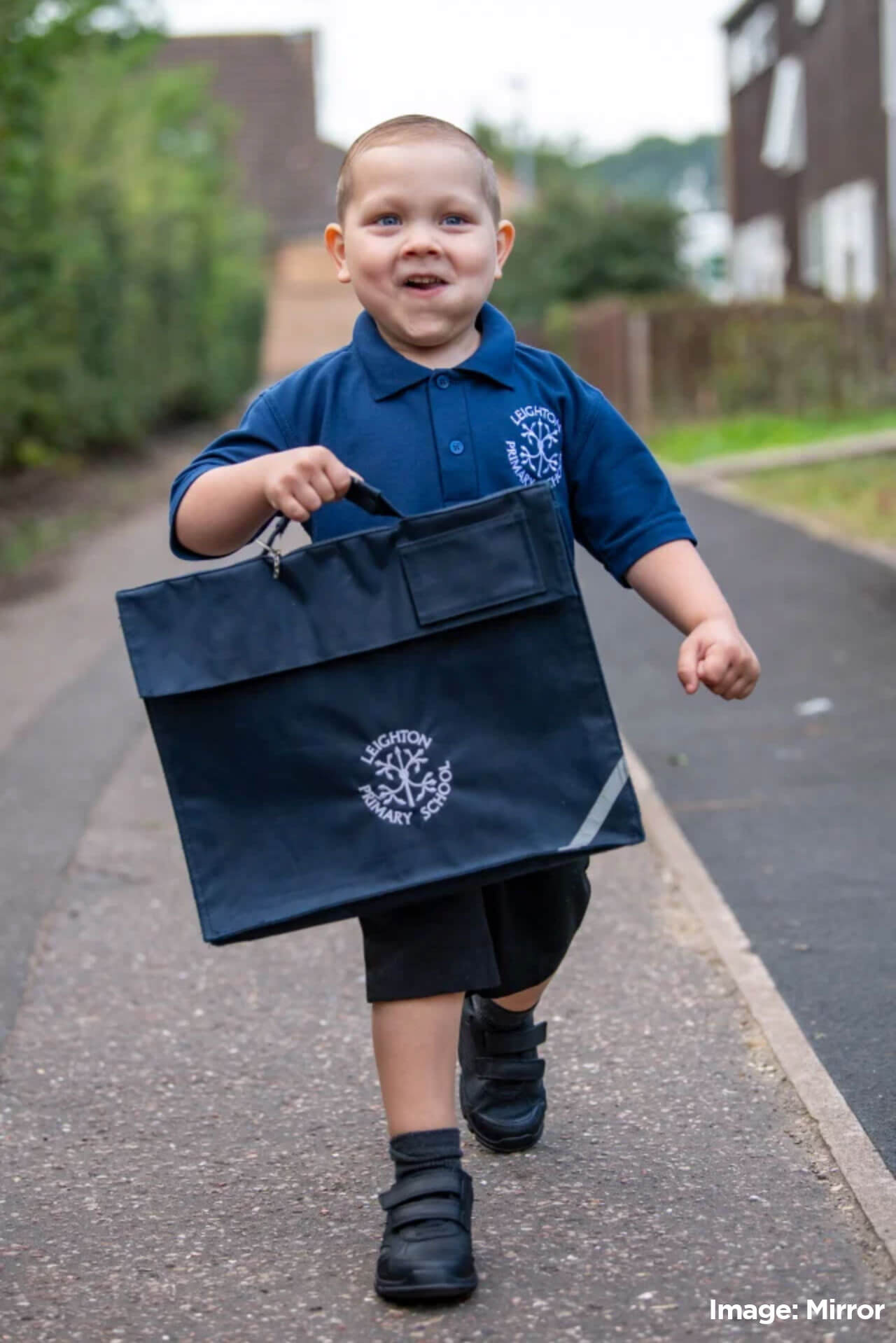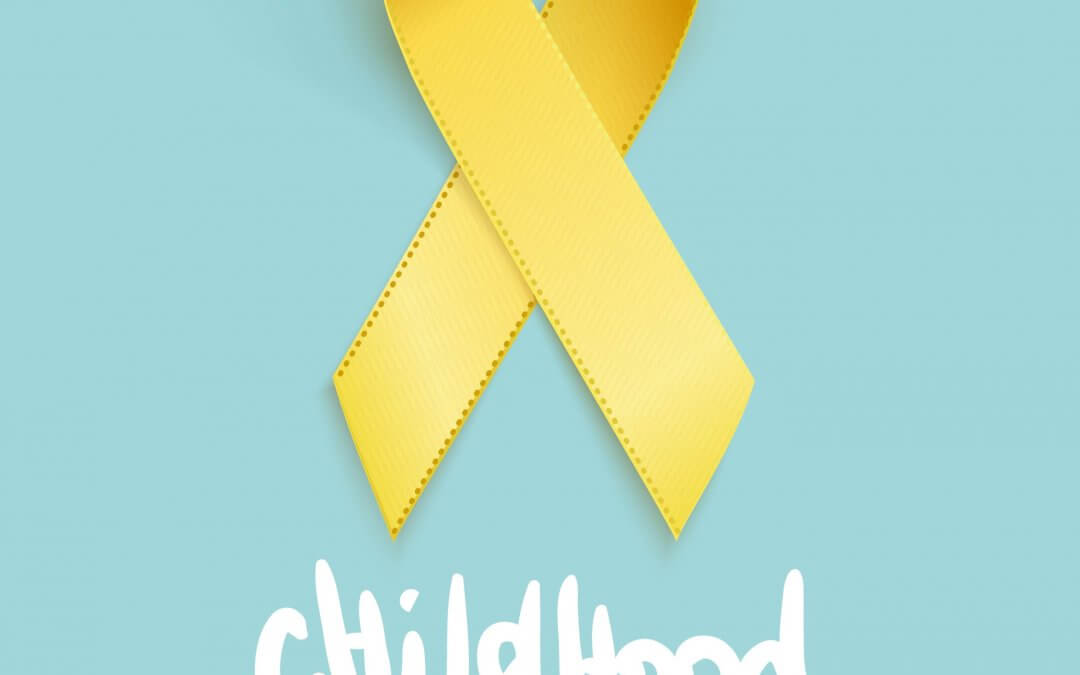September is Childhood Cancer Awareness Month. To raise awareness, we’ve shared 10 facts that you need to know about childhood cancer. We discuss how umbilical cord blood can help to treat childhood cancers and share the story of 4-year-old, Josh Stockill, who has beaten leukaemia twice thanks to a cord blood transplant. Read on to find out more…
When is Childhood Cancer Awareness Month?
September is officially designated Childhood Cancer Awareness Month with the aim of bringing awareness of childhood cancer, which continues to be the leading cause of death by disease for children under the age of 14.
10 Facts You Should Know About Childhood Cancer
1) Childhood cancer is rare.
Around 1,800 new cases are diagnosed each year in the UK in children aged 0-14 years. Globally there are more than 300,000 children diagnosed with cancer each year.
2) Childhood cancer is not one disease, but several.
There are more than 12 major types of childhood cancers and over 100 subtypes. Some of these major cancer types include leukaemia, neuroblastoma, and lymphoma. The causes of most types of childhood cancer are not known, but researchers are beginning to understand some of the genetic mutations that might cause certain types of childhood cancer and are using that information to search for treatments and cures.
3) The most common childhood cancer is acute lymphoblastic leukaemia (ALL).
Acute Lymphoblastic Leukaemia (ALL) is a type of cancer that affects white blood cells. The cancer progresses quickly and aggressively and often requires immediate treatment. However, thanks to research, about 90% of children with the most common form of Acute Lymphoblastic Leukaemia will survive.
4) Different types of childhood cancer are more common at different ages.
Some forms of cancers such as neuroblastoma and acute lymphoblastic leukaemia (ALL) are most common in children under 5 years old. Whereas other cancers, such as bone tumours, are rare in young children, but become more common with age and peaking in adolescence.
5) Childhood cancer rates have increased by 15% in recent years.
Since the early 1990s, there has been a 15% increase in children’s cancer incidence rates. However, it is thought this may be due to improvements in diagnosis and registration.
6) Thanks to research, childhood cancer survival rates are improving.
7) Childhood cancer treatment is no longer just chemotherapy and radiation.
8) Clinical trials and data brings us closer to finding more treatment opportunities for childhood cancer.
According to ClinicalTrials.gov, there are 133 registered clinical trials investigating the use of stem cells in the treatment of childhood leukaemia and 131 clinical trials for lymphoma. Researchers continue to search for safer, effective treatments to tackle childhood cancer.
9) Families often have to travel for cancer treatment.
10) Cord blood stem cells are routinely used in the treatment of children with cancer.
Since the early 1990s, stem cell transplants using umbilical cord blood have been used to treat and even cure both children and adults with leukaemia. More than 35,000 cord blood transplants have been performed worldwide, with the majority being for leukaemia and other blood disorders.
How can umbilical cord blood help to treat childhood cancers?
Umbilical cord blood is a rich source of stem cells for transplantation. Umbilical cord blood stem cells contain haematopoeitic stem cells (HSCs) which have the unique ability to transform into any type of blood cell. For this reason, they are frequently used in stem cell treatments for various blood cancers and disorders, including leukaemia, neuroblastoma, and lymphoma – all of which are common cancers of children.
Currently, the most common treatment for blood cancer is chemotherapy, which is used to destroy the cancer cells in the body. However, this can cause significant damage to the body, making it difficult to continue producing healthy blood cells and increasing vulnerability to infections.
This is where stem cells for cancer treatments come in. The haematopoeitic stem cells (HSCs) found in umbilical cord blood can then be transplanted to regenerate the production of healthy blood cells. This helps to restore the immune system and promote recovery following intense courses of chemotherapy.
A study published in 2016 revealed that leukaemia patients who were treated with cord blood transplants lived longer than those who received bone marrow transplants. Additionally, the patients treated with cord blood were less likely to relapse than those treated with bone marrow transplants.
It is important to note that children with leukaemia or another form of blood cancer or disorder would normally receive a cord blood transplant from a donor rather than an autologous cord blood transplant – i.e. receiving their own cord blood, as it may carry the mutation for leukaemia.
However, it is possible to receive an autologous cord blood transplant if the child has a cancerous solid tumour such as neuroblastoma. In fact, in 1998, a girl with neuroblastoma became the first case in the world to receive her own cord blood.
Four-year-old beats leukaemia twice and starts his first day of school
Josh Stockhill was diagnosed with acute lymphoblastic leukaemia at just 8 months old. After receiving chemotherapy, Josh then developed sepsis and was put into intensive care. Josh then endured 9 months of chemotherapy but relapsed at 2 years old. Recently, Josh found a match for a cord blood stem cell transplant in Spain which has changed his life. Last week, Josh attended his first day at school.
Josh’s mother, Kirsty, is now speaking out and raising awareness as part of Childhood Cancer Awareness Month, urging people to consider donation cord blood donation. She said: “It was a cord blood donation from Spain that saved him. Some hospitals keep it, some don’t, but it can be a real life saver. It is so, so important – if you ever get the chance to donate, please do.”
To find out more about cord blood donation click here.

How can I support Childhood Cancer Awareness Month?
- Learn: Know the facts and tell your family and friends.
- Go Gold: Gold is the international colour of childhood cancer awareness, with many supporters choosing to wear a gold ribbon throughout September. Show your support by wearing yours!
- Share this article: Help raise awareness of childhood cancer and all of the research that is currently being undertaken to help children across the world.
- Spread the word: use the following hashtags to raise awareness across social media #childhoodcancerawareness #gogold #childhoodcancer #childhoodcancerawarenessmonth
References
Parents Guide to Cord Blood Foundation, (2020) “Can cord blood cure leukemia?”, available at:
https://parentsguidecordblood.org/en/faqs/can-cord-blood-cure-leukemia
Parents Guide to Cord Blood Foundation, (2020) “Can a child with cancer be treated with his or her own cord blood?”, available at:
https://parentsguidecordblood.org/en/faqs/can-child-cancer-be-treated-his-or-her-own-cord-blood
Children with Cancer UK, (2020) “Childhood Cancer Facts & Figures”, available at:
https://www.childrenwithcancer.org.uk/childhood-cancer-info/childhood-cancer-facts-figures/
ClinicalTrial.gov, (2020) “Childhood Leukaemia and Stem Cells”, available at:
https://clinicaltrials.gov/ct2/results?cond=Childhood+Leukemia&term=stem+cells&cntry=&state=&city=&dist=&Search=Search
Louis Smith, (2020), “Boy who beat leukaemia twice starts first day at school after bone marrow transplant”, available at:
https://www.mirror.co.uk/news/uk-news/boy-who-beat-leukaemia-twice-22694898
The Leukaemia & Lymphoma Society, (2020) “Cord Blood Stem Cell Transplantation”, available at:
https://www.lls.org/sites/default/files/file_assets/cordbloodstemcelltransplantation.pdf
http://www.cancercenter.com/leukemia/stem-cell-transplantation/
https://clinicaltrials.gov/ct2/results?term=stem+cells+leukaemia&Search=Search
Frontiers in pediatrics, 7, 443. https://doi.org/10.3389/fped.2019.00443
Lancet (London, England), 399(10322), 338–339. https://doi.org/10.1016/S0140-6736(22)00057-5
Lancet (London, England), 399(10322), 372–383. https://doi.org/10.1016/S0140-6736(21)02017-1
Request a Welcome Pack
Find out more about cord blood banking by downloading a Welcome Pack now.









